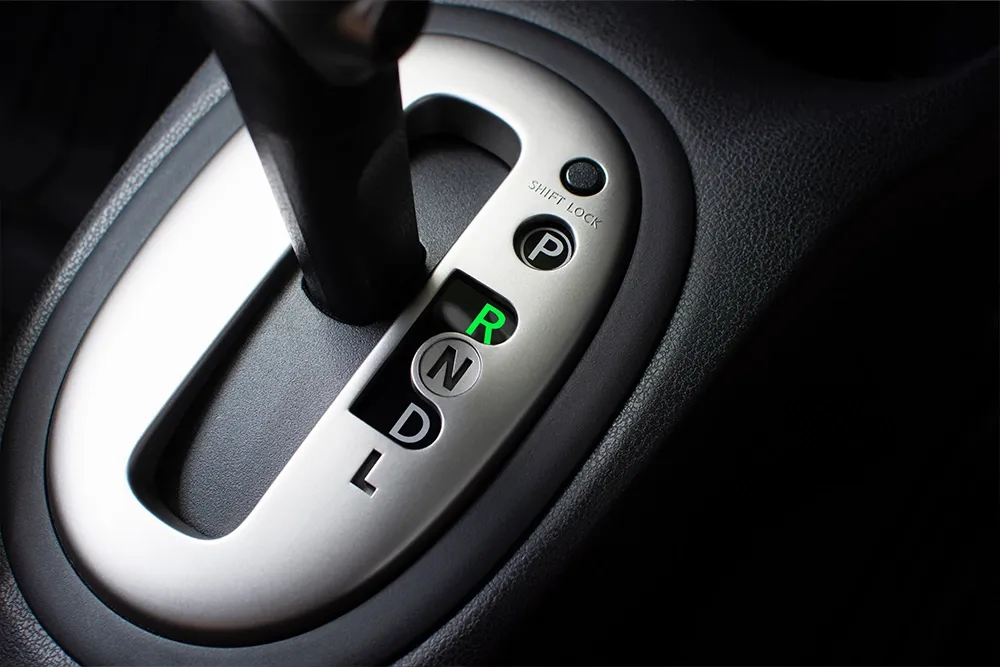There are few things more annoying for drivers than getting in your car, putting the gear into reverse, and trying to reverse but discovering it isn’t reversing; however, it will drive forward automatically! If you have ever found yourself in this situation, you are not in it by yourself. Car reverse issues are one of the most common problems, and there can be numerous causes that can happen; the cause could be very simple, like low transmission fluid, or it could be a severe problem like a dead transmission.
In this blog, you will learn about why your car won't reverse but will continue to run forward, especially in automatic transmissions. We discuss the common causes of car reverse issues like low transmission fluid, faulty sensors, wear and tear, and electrical faults. We further detail reverse gears, some good DIY fault-finding methods that assist in quickly diagnosing the problem, and recognizing when to call in the professionals.
We will be referring to some technical terms, we will explain what they mean and provide a precaution to ensure how to keep your car in a perfect operating condition.
What are Car Reverse Problems and Why Do They Occur?
Car reverse problems refer to instances when your car cannot shift into or move in reverse gear, but forward gears may work perfectly. This is an extremely annoying problem that troubles most drivers, especially automatic transmission car owners.
Why is My Car Having Trouble in Reverse?
Most Common Reasons Are:
Low or dirty transmission fluid, in particular, may restrict the gear from going back, thanks to too little fluid to provide hydraulic pressure.
A faulty transmission position sensor, which cannot ascertain that the gear has shifted.
Worn or damaged reverse gear components, as mechanical wear keeps a gear from engaging.
A plugged transmission filter. This one hinders fluid movement and can easily contribute to issues with shifting.
Valve body issues WILL disrupt the hydraulic pressure.
Electrical issues (specifically either your wiring or the transmission control module malfunctioning).

How Does a Reverse Gear Work?
Reverse gear works in both automatic and manual transmissions by allowing the vehicle to go backward.
Automatic transmissions use hydraulic pressure generated by the transmission fluid to engage the reverse gear via clutch packs as controlled by the valve body.
Manual transmissions mechanically engage a reverse gear via the gear lever and linkages.
Any failure in these parts can cause your car to refuse reverse gear engagement.
How Do I Fix Reverse Gear Problems?
Here's a convenient troubleshooting chart:
- Check transmission fluid - Correct fluid level and state.
- Examine for leaks - Repair any transmission fluid leak.
- Scan for diagnostic trouble codes - Identify malfunctioning sensors or modules.
- Check transmission position sensor- Replace if defective.
- Check mechanical parts - Repair or replace worn gears and valve body components.
- Inspect electrical systems - Repair wiring or TCM malfunctions.
Why Transmission Fluid Is Needed for Reverse Gear
Transmission fluid is the backbone of your vehicle's transmission system. It does many important jobs:
- Lubricates the moving parts of the transmission to reduce wear and tear.
- Serves as a hydraulic fluid to operate the clutches and bands to deliver smooth gear changes.
- Cool the transmission by dissipating heat generated by friction.
- Clean the transmission by picking up dirt and metal scrapings.
Without clean, proper transmission fluid, your vehicle's transmission will fail, leading to car reverse issues like not being able to shift into the reverse gear.
My Car Won't Reverse, But Will Go Forward (Automatic)
Automatic transmission motorists commonly complain about this problem. The reason it might happen is:
The transmission fluid might be low or dirty, and this affects only the reverse gear due to its unique hydraulic circuit.
The transmission range sensor can give an incorrect gear selection signal to the car computer.
The reverse gear-engagement valve body solenoid can be faulty.
Internal mechanical transmission damage is restricted to reverse gear parts.
Maintenance includes: transmission fluid check and replacement, faulty sensor fault scan, and faulty valve body component repair or replacement.
How to Prevent Car Reverse Issues
- Regular Transmission Fluid Checks and Replacement - Refer to your car maintenance chart.
- Fix Transmission Warning Lights Early - Catch problems early to save yourself expensive repairs later.
- Do Not Sudden Shift Into Gear - Always come to a complete stop before shifting your vehicle into reverse.
- Expert Inspections - Scheduling periodic inspections of your transmission can help you identify wear issues in the early stages.
When to Consult an Expert Mechanic
If you've done some troubleshooting and your car is still not moving in reverse, it's time to consult an expert. Transmission repairs can be complicated and require specialized tools and know-how. If you ignore symptoms, you could cause additional damage and higher repair costs.
There are many reasons a car won't reverse, related to either mechanical or electrical functionality, and an empty or dirty transmission fluid is a common problem. If your vehicle will not reverse but will drive forward automatically, or if you can't shift in only reverse gear, understanding potential causes tells you what to do.

Regular maintenance, like transmission fluid service and repair by trusted mechanics, will keep your transmission healthy and prevent reverse gear failure. In case of persistent problems, don't wait to have the problem professionally diagnosed and fixed to ensure your vehicle's safety and reliability on the road.
FAQs
- Why won't my car go in reverse?
Due to low transmission fluid, bad sensors, or mechanical wear.
- How do you fix a car that won't go in reverse?
Check fluid, scan codes, check sensors, and have a mechanic inspect if necessary.
- What causes a transmission to stop reversing?
Hydraulic failure, gears worn out, electronic or valve body malfunction.
- Can low transmission fluid cause reverse gear problems?
Yes, fluid pressure helps activate the reverse gear clutch packs.
- My car will not reverse, but will drive forward automatically - what is wrong with it?
It is usually a defective reverse hydraulic circuit, sensor, or mechanical component.
- How to fix reverse gear issues?
Install a new transmission pan gasket to inspect the fluid levels, scan for sensor faults, and fix any mechanical or electrical faults if required.








